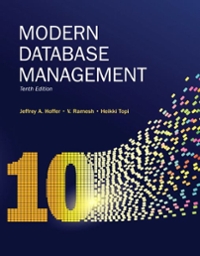Question
Case: PHIL CAREY Read the case and then consider the questions below. The individual Phil Carey is an IT manager in the United States. He
Case: PHIL CAREY
Read the case and then consider the questions below.
The individual
Phil Carey is an IT manager in the United States. He works for WFC, an international food company with its HQ in Brussels. He used to work for Matty's, a household name in the States producing ready-to-bake meals. Matty's was taken over by WFC 18 months ago, and a key role for Phil is to integrate Matty's Customer Relationship Management (CRM) System into WFC's global SAP-based IT system. Phil is very proud of having developed Matty's IT infrastructure and support. He is a competent CRM specialist but has no international experience. He is a family man, and people in the United States regard him as easy-going and friendly.
The team
Phil is part of a global IT team. He reports to Max Stellter, a Swiss citizen, and head of IT in Brussels. Max has been with WFC for 10 years working in Switzerland, Singapore and now Belgium. He speaks French, German and very good English. Max is ambitious and very result-focused. He is always courteous but keeps his distance from his team members. Max has set up a team of six to support sales with an integrated CRM system. Two other team members come from the main sales unit in Brussels - Susan Key, an Australian, and Kika Malouda, a Moroccan. The other two are based in Brazil and Thailand.
The organization
WFC was founded in 1978 as a result of a merger between Amor, a French dairy product company and Pellinero, a Spanish frozen-food company. These two divisions still represent over 40% of the business. However, the head office moved to Brussels 15 years ago, and there, a multinational group supports a global business. The current CEO is a Mexican - Juan Reales. The culture of the head office is 'technocratic' while local offices around the world have stayed close to their roots. IT is a challenging area for the head office as it is trying to leverage size and best practices across the group. Not surprisingly, there is resistance to both the centralization of information (in particular, monitoring of key performance indicators) and also what is seen as the bureaucratization of work - more and more online forms and reporting.
The incident
The CRM team has a regular weekly web meeting. One of the items on the agenda is knowledge transfer - a chance for individuals to present insights and learn from their own experiences. During the last meeting, it was Phil's turn to share experiences, and he presented his development and implementation of the Matty CRM system: he is really enthused about his 'baby'. He thought this was a great chance to sell the competence of his IT team and, therefore, their contribution to this global project. After about five minutes, he stopped talking and invited questions. Nobody asked anything. Max thanked him for his contribution and moved on to the next item. All the rest of the team became engaged as they discussed the pilot roll-out in Brazil. Phil felt totally deflated and wondered what he had done wrong.
Reflections
The following remarks were made to Max after the meeting:
- 'What was he talking about? His accent is so strong I couldn't understand a word.'
- 'Why should we want to hear about Matty's CRM system? We have our own to roll out.'
- 'The Americans are always like that. Boasting about their successes.'
- 'I wanted to interrupt but didn't get a chance.'
- 'Phil seems like a nice guy. He needs to find out more about what's going on here in Brussels.'
Questions to consider
- Phil: What does Phil need to understand about his personality and culture and the differences between him and others on the team? What skills does Phil need to develop?
- Max: Has Max fulfilled his role as "meeting leader"? How would you have acted in this situation?
- Team members: Was making remarks to Max after the meeting the best way to support the team's task? How would you have acted in this situation?
- Organization: What is your assessment of the organization for intercultural management?
Step by Step Solution
There are 3 Steps involved in it
Step: 1

Get Instant Access to Expert-Tailored Solutions
See step-by-step solutions with expert insights and AI powered tools for academic success
Step: 2

Step: 3

Ace Your Homework with AI
Get the answers you need in no time with our AI-driven, step-by-step assistance
Get Started


